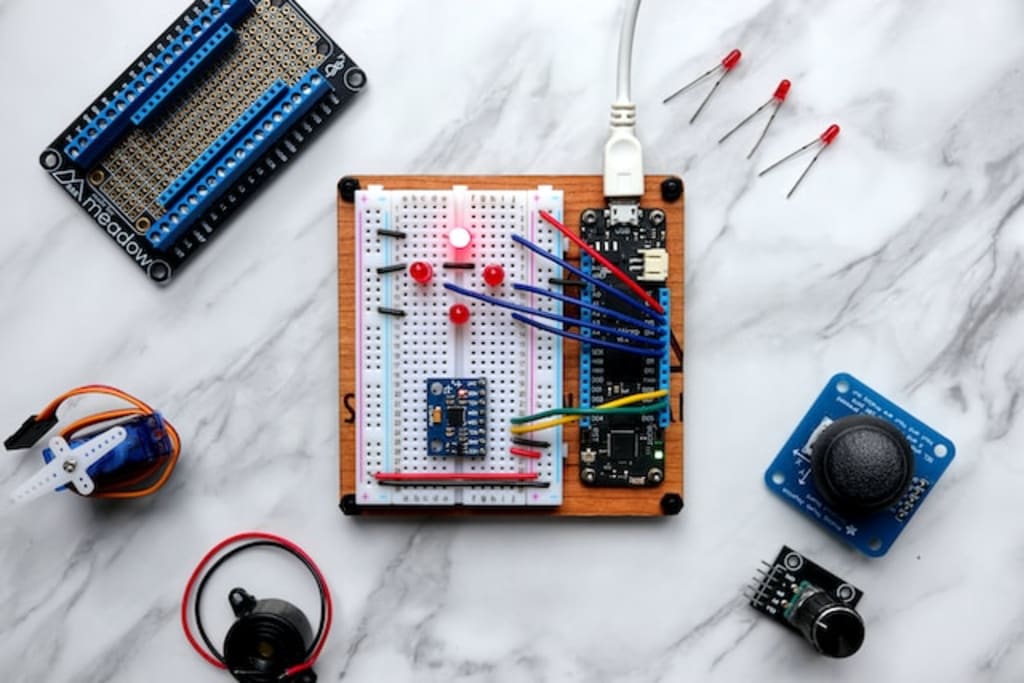Types of IoT Testing Strategies
Know various methods of testing IoT

The Internet of Things (IoT) has rapidly evolved to become a cornerstone of the digital age, connecting everything from smart thermostats to industrial machines and healthcare devices. With the proliferation of IoT devices, ensuring their reliability, security, and performance has become more crucial. Comprehensive testing strategies are essential to achieving this. The devices find their application in various domains and cutting-edge technologies like 5G have enhanced their capabilities and exponentially increased their usage, applications and adoption. However, as the number of these IoT devices grows, testing these devices has become crucial and challenging. The variety of devices and communication technologies, as well as the requirement for interoperability, can pose a challenge for IoT implementation. Since IoT is essentially a network that communicates in real-time, any issue in the performance and security of any component can affect the whole network.
This blog will delve into the various types of IoT testing strategies, each playing a unique role in ensuring IoT ecosystems operate seamlessly, securely, and without compromise.
Techniques For Testing Iot Solutions
IoT testing addresses such issues and consists of quality assurance (QA) tests that verify the entire system's functionality, performance and security. Testing is an adaptive process involving various methods, tests, and customized tools to ensure that the IoT solutions are fit for commercial use. These tests can cover IoT app functionality, performance, user experience, security and network connectivity to detect and resolve any existing or potential threat and vulnerability before its deployment.
Let's discuss some of the popular techniques;
Usability test: The usability test for IoT devices checks whether the IoT device is easy to use, user-friendly and intuitive. It involves testing the user interface, device features and functions, accessibility and localization of the device, and user feedback and satisfaction. This test helps improve user experience, increase user adoption and reduce errors.
Types of usability testing:
- Testing whether the IoT device app has a clear and consistent layout, design and navigation.
- Testing checks whether the IoT device app provides helpful and relevant information, messages, and notifications.
- Testing whether the device responds accurately and quickly to user inputs and commands.
- Testing to check if the IoT device meets user expectations and needs.
Compatibility test: It is essential to ensure that the IoT devices can communicate and interact with other devices and systems without any errors or issues. The compatibility test checks whether the IoT devices can work well with different user interfaces, operating systems, software and network environments. This test can help identify and resolve potential problems or conflicts that may arise due to the complexity and diversity of IoT devices and their components.
Examples of compatibility testing:
- Testing whether the IoT device app runs on multiple browsers and platforms.
- Testing whether the IoT devices can connect and transfer data through different communication channels such as Bluetooth, Wi-Fi, etc.
- Testing whether the IoT devices support different features and functions, such as printing, scanning, voice control etc.
- Testing to check whether IoT devices can work with different software and firmware versions and updates.
Security test: Security testing for IoT devices helps find vulnerabilities that hackers can exploit to gain access to networks, modify data, or steal information. Besides significant financial losses and identity theft, this can cause irreparable reputational damage. IoT testing is a challenging and a crucial task that requires skills, tools and techniques and helps ensure that the IoT devices are safe, reliable and trustworthy.
The different types of IoT security testing are:
- IoT penetration testing - In this type of testing, security professionals find and exploit security vulnerabilities in IoT devices. This helps them identify and fix the vulnerabilities and weaknesses in the device hardware, software, firmware, network and communications protocols.
- Threat modeling - This process determines the threat model for the IoT device and how it can be breached. It helps identify the possible attack scenarios and the impact of a security breach on the device and users.
- Firmware analysis involves extracting, reverse engineering and examining the firmware of an IoT device. It can help reveal security issues such as passwords, encryption keys and implementation failures, such as buffer overflows, memory leaks or insecure coding practices.
Reliability and scalability test: The reliability and scalability testing aims to ensure the quality and performance of IoT solutions under various loads and conditions. The reliability test checks whether IoT devices can function consistently and correctly without any failures or errors. At the same time, the scalability testing verifies whether the IoT devices can handle varying loads of data, users, or requests without compromising the system's speed, responsiveness or efficiency. These tests help prevent or resolve potential issues affecting user experience and satisfaction. These tests involve various methods, tools and techniques specifically tailored to the characteristics of each IoT solution.
Connectivity test: A connectivity test verifies whether IoT devices can connect and communicate with other devices, systems, or networks. It is essential to ensure IoT devices can send and receive data securely and reliably without errors or delays. Some various tools and techniques can be used, such as Azure IoT Hub portal tools and Azure CLI commands, Wireshark, Nmap etc.
This test involves different methods such as:
- Device authentication - This helps verify the identity and credentials of the IoT device before allowing it to access the network or the cloud, helping prevent any unauthorized or malicious devices from joining the network or compromising the data.
- Device-to-cloud connectivity sends data from the IoT device to the cloud platform, where it can be stored, processed or analyzed. It helps enable remote monitoring, control or management of the IoT device.
- Cloud-to-device connectivity - This process sends data or commands from the cloud platform to the IoT device, which can be received, executed or displayed. It helps with remote updates, configuration, and feedback.
- Device twin synchronization maintains a consistent state and configuration between IoT device and the cloud platform. It helps enable a bidirectional communication and synchronization of the IoT devices properties, settings and status.
Performance test: It helps ensure the quality, functionality, performance and security of IoT devices running on various platforms and networks. It involves different types of testing such as volume, load, stress, spike and endurance testing. Each type of testing has its own purpose and challenges, requiring a suitable testing environment and tools. It also differs from traditional performance testing in terms of complexity, diversity and dynamism. Performance testers need to have a clear understanding of IoT architecture, components, protocols and standards as well as the specific requirements and expectations of IoT device users.
Conclusion
The IoT application testing process helps ensure quality, functionality, performance and security of IoT applications that run on various devices and platforms. It involves different types of testing methods or strategies and comes with its own challenges and best practices. It is a vital part of the IoT development cycle that ensures the delivery of reliable and high-quality IoT products and services.
About the Creator
Ryan Williamson
A professional & security-oriented programmer having more than 6 years of experience in designing, implementing, testing & supporting mobile apps developed. Being techno geek, I love to read & share about the latest updates in technology.
Enjoyed the story? Support the Creator.
Subscribe for free to receive all their stories in your feed. You could also pledge your support or give them a one-off tip, letting them know you appreciate their work.






Comments
There are no comments for this story
Be the first to respond and start the conversation.